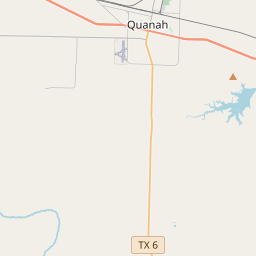Medicine Mound Community
Historical marker location:






Early inhabitants of this area were Comanche and Kiowa Indians whose campsites were situated around four dolomite hills called Medicine Mounds and known for their healing properties. In 1854, area land was deeded to a railway company. Anglo settlers began to arrive in the 1870s. A small village developed but was moved 2.5 miles north in 1908 when the Kansas City, Mexico and Orient Railway was built. A townsite was platted that year and was fully established by 1911. At its peak, Medicine Mound boasted 22 businesses and a population of 500. Economic hardships, the Great Depression and a 1933 fire that burned the entire town were primary forces in the town's eventual demise. The last business closed in 1966. (1999)
As one of the most visible programs of the Texas Historical Commission (THC), historical markers commemorate diverse topics in Texas history, including: the history and architecture of houses, commercial and public buildings, religious congregations, and military sites; events that changed the course of local and state history; and individuals who have made lasting contributions to the state, community organizations, and businesses.
Texas is home to the world's largest bat colony. The Bracken Bat Cave, near San Antonio, is home to millions of Mexican free-tailed bats.
During the late 1800s, Hardeman County experienced significant growth and development. Settlers began to arrive in the area, attracted by the fertile land and opportunities for farming and ranching. The town of Quanah emerged as the county seat and quickly became a hub of economic activity.
The county played a significant role in the Texas cattle industry. Ranchers established large cattle ranches, and the famous 6666 Ranch, owned by Samuel Burk Burnett, became one of the most renowned in the area. The cattle industry thrived until the late 1800s when severe droughts devastated the region. Many ranchers were forced to sell their land or move their herds elsewhere.
In the early 1900s, oil was discovered in nearby Wichita County, leading to an economic boom in Hardeman County. The town of Quanah became a major center for oil production, attracting oil companies and workers from all over the country. This oil boom brought prosperity to the county, and many businesses and infrastructure were developed during this time.
Throughout the 20th century, Hardeman County experienced ups and downs, with periods of economic growth and challenges. The agriculture industry, including ranching and cotton farming, has remained an important part of the county's economy. Today, Hardeman County is known for its rural charm, historic landmarks, and strong sense of community.
Hardeman County Timeline
This timeline provides a glimpse into the major events and milestones that have shaped the history of Hardeman County, Texas.
- 1858 - Hardeman County is established by the Texas state legislature.
- 1884 - Quanah is designated as the county seat.
- Late 1800s - Cattle ranching becomes a major industry in the county.
- 1918-1919 - The county experiences an oil boom.
- 1924 - Hardeman County Airport is established.
- Mid-1900s - Agriculture becomes the primary industry in the county, with cotton and wheat being major crops.
- 1969 - Copper Breaks State Park is opened to the public.
- 1974 - The county courthouse is listed on the National Register of Historic Places.
- Late 1900s to present - Oil and gas production continue to play a significant role in the county's economy.